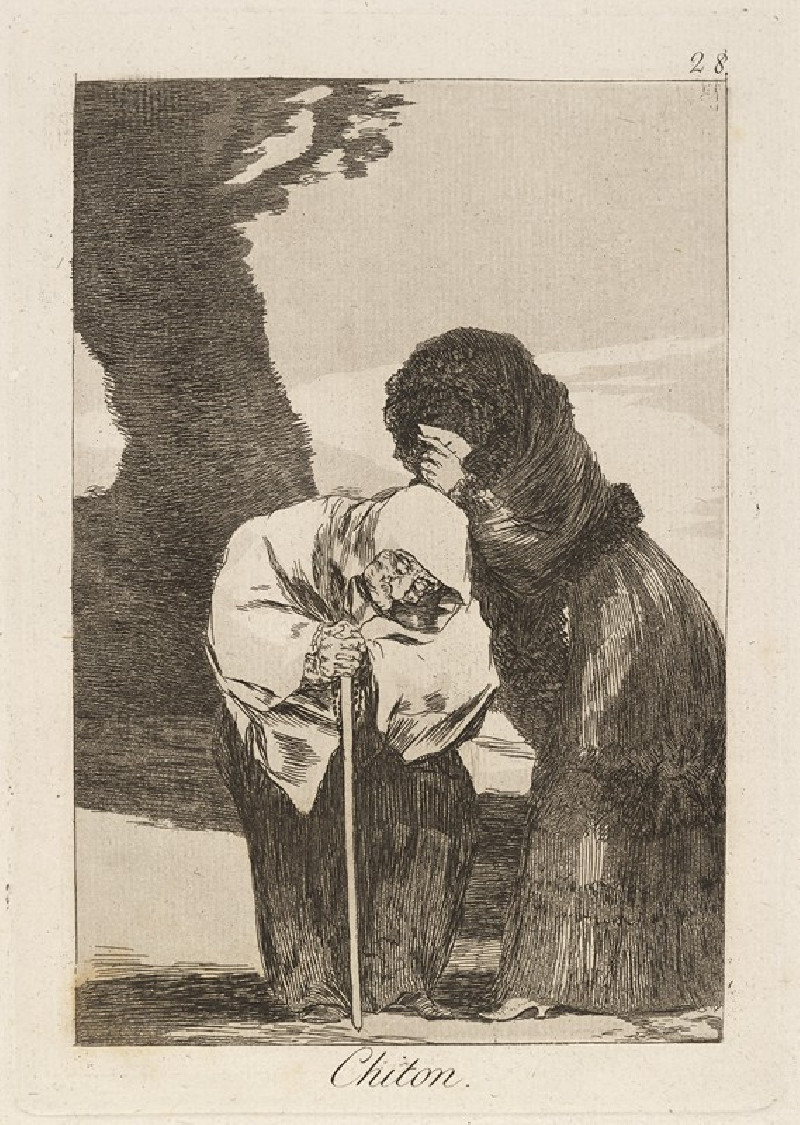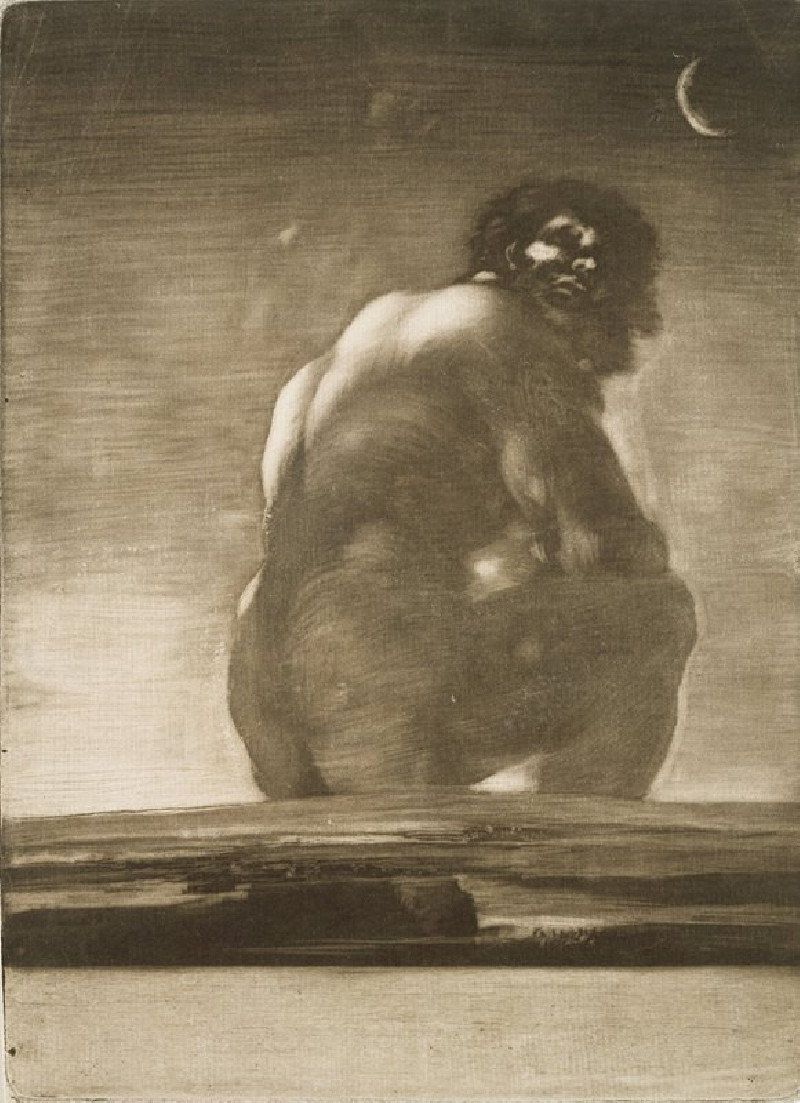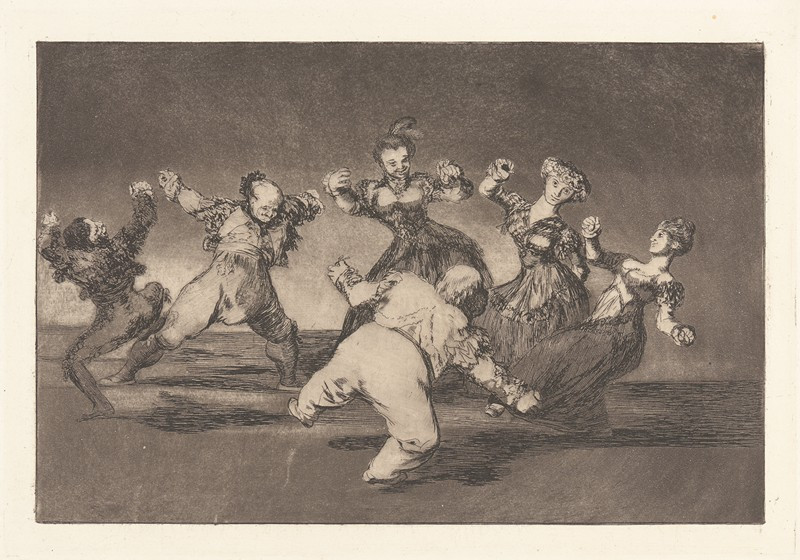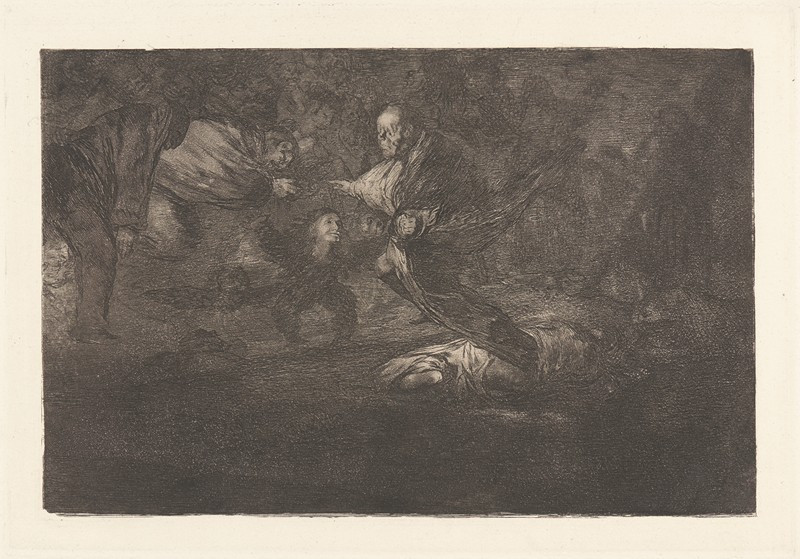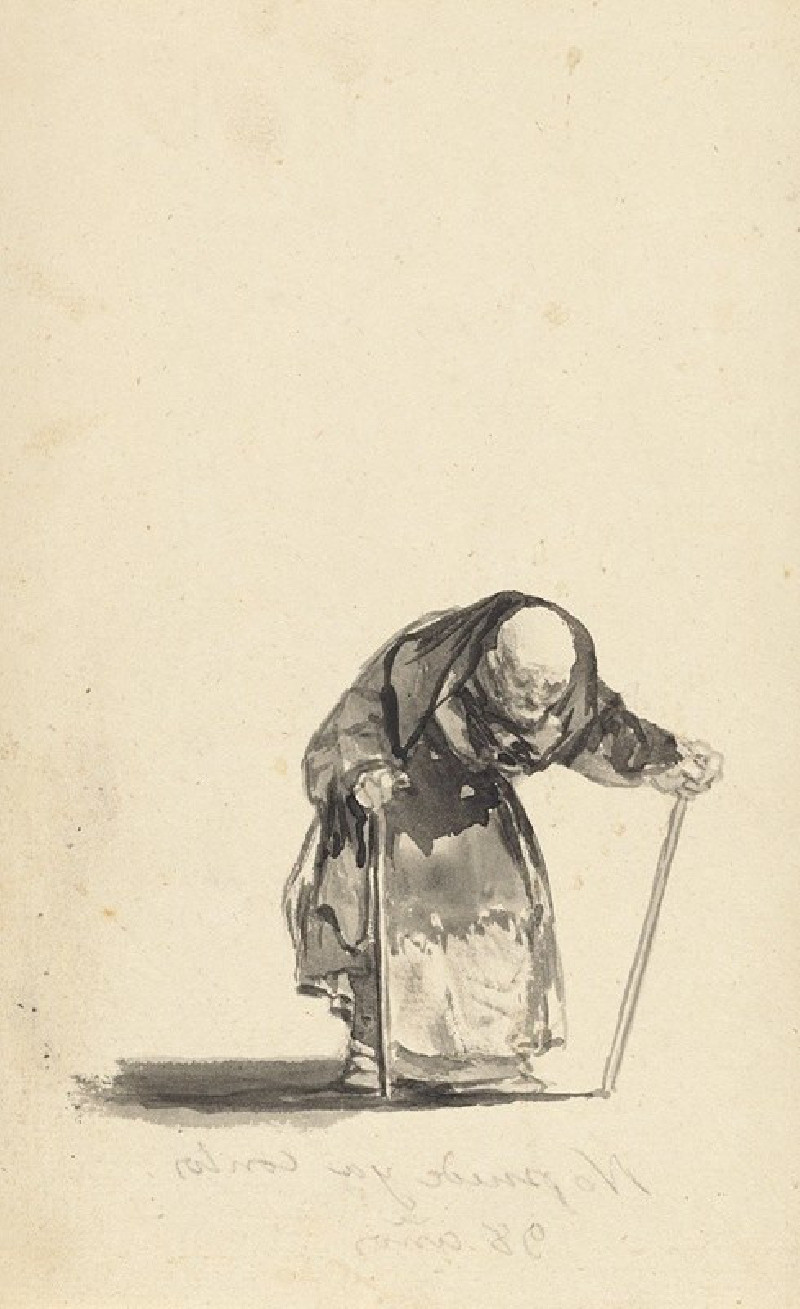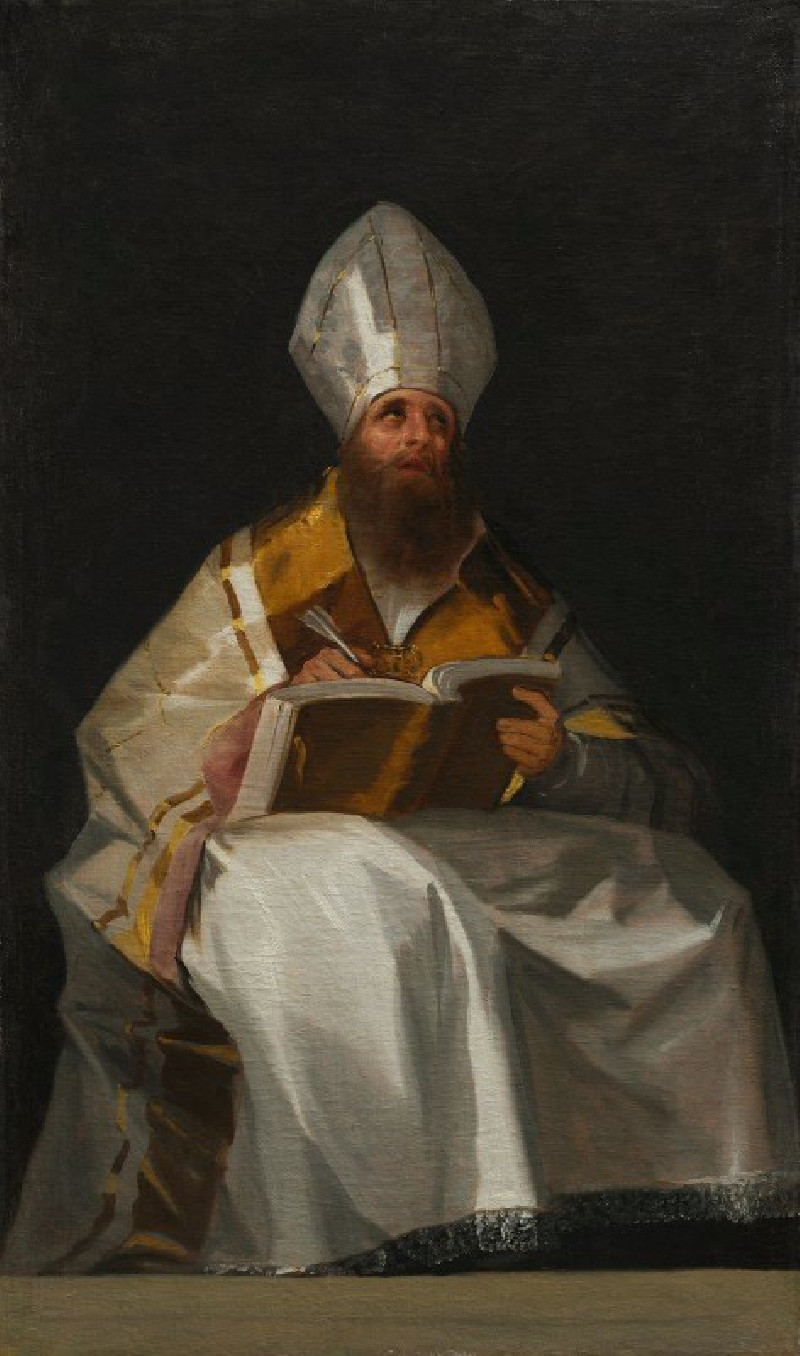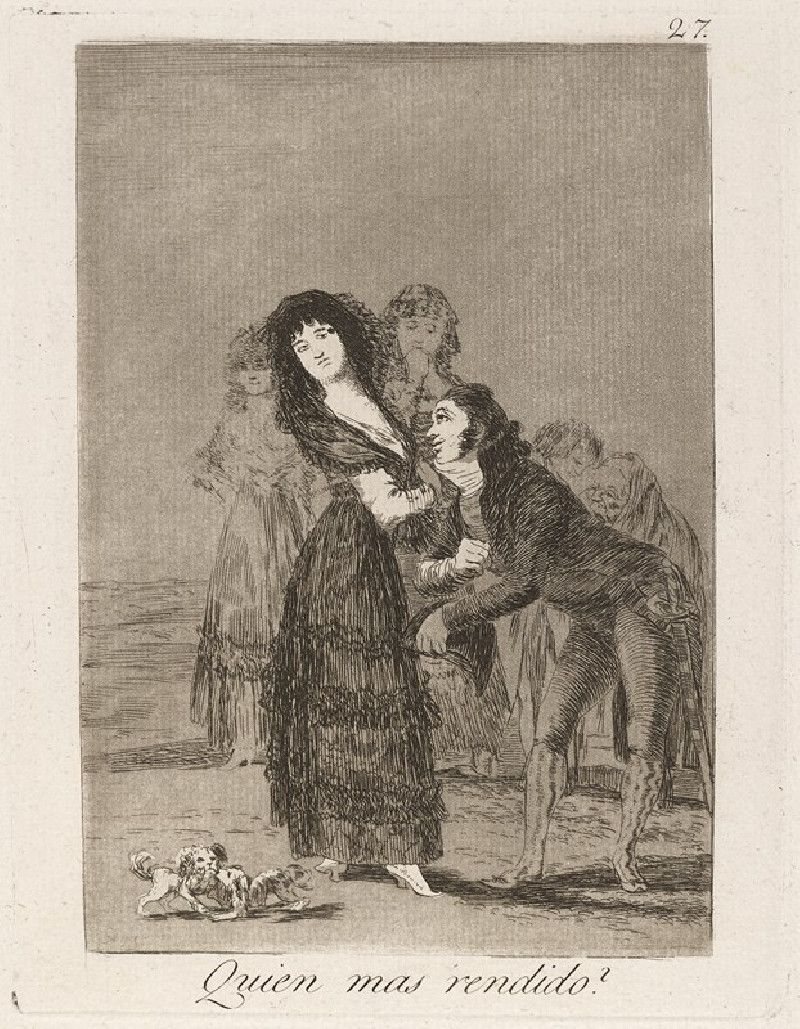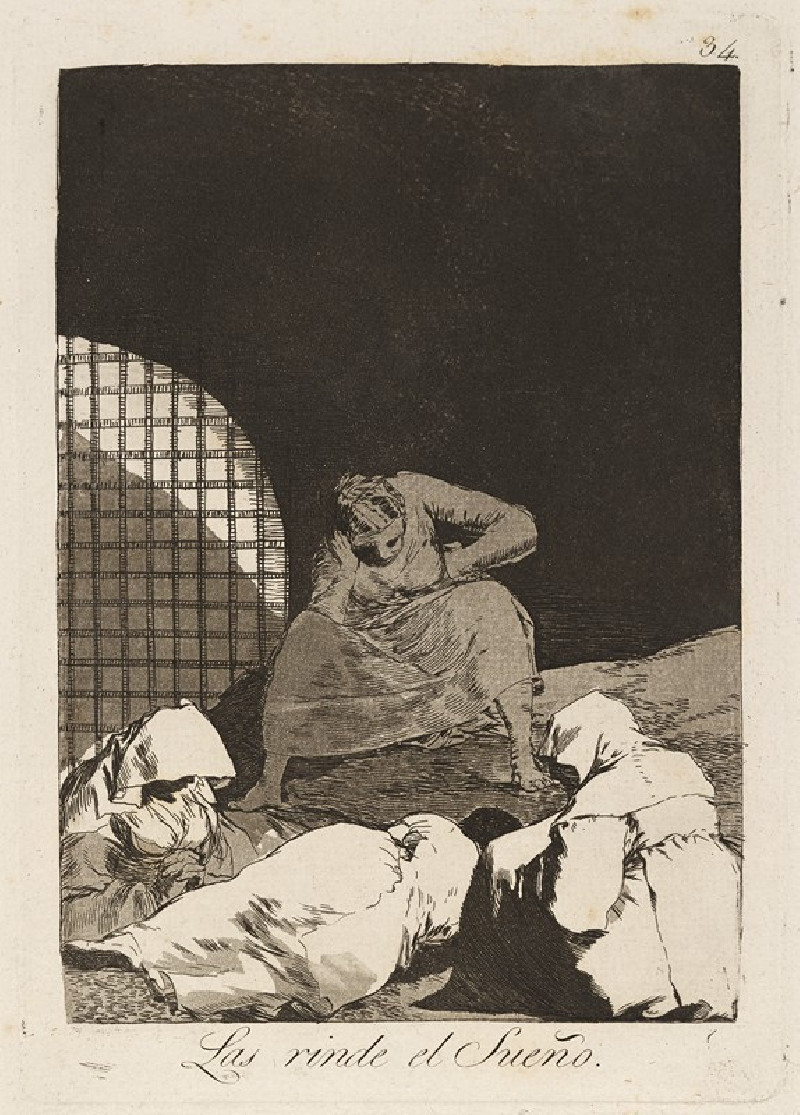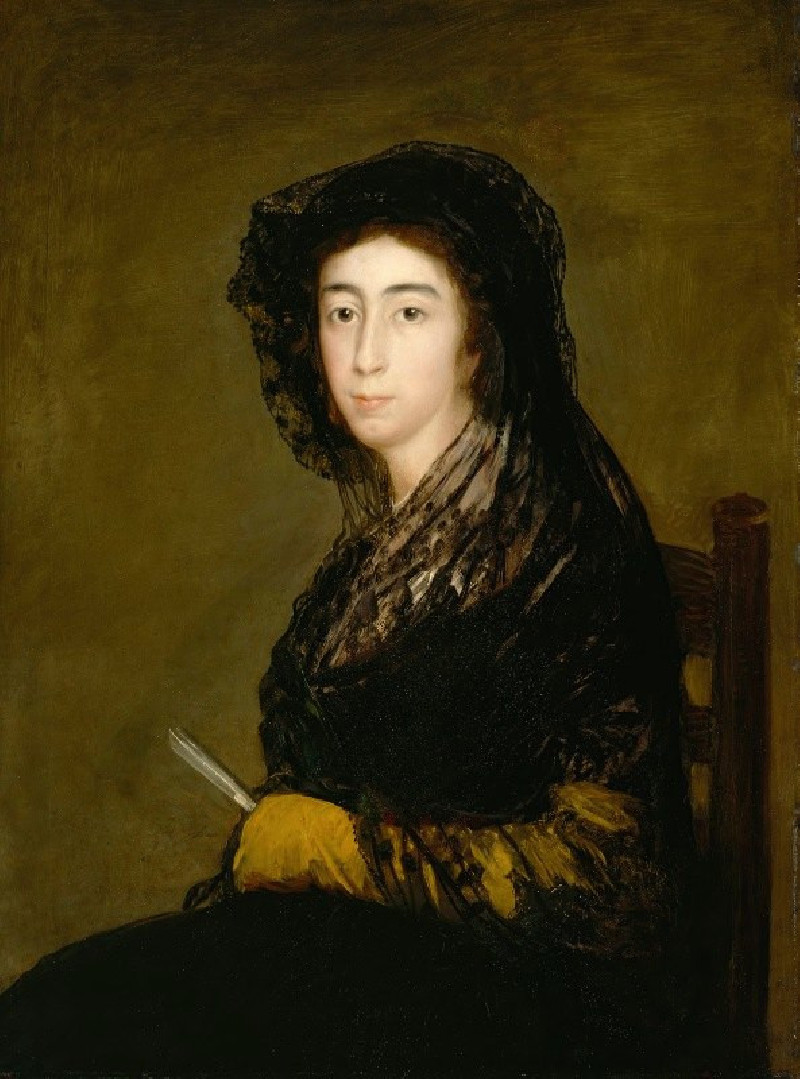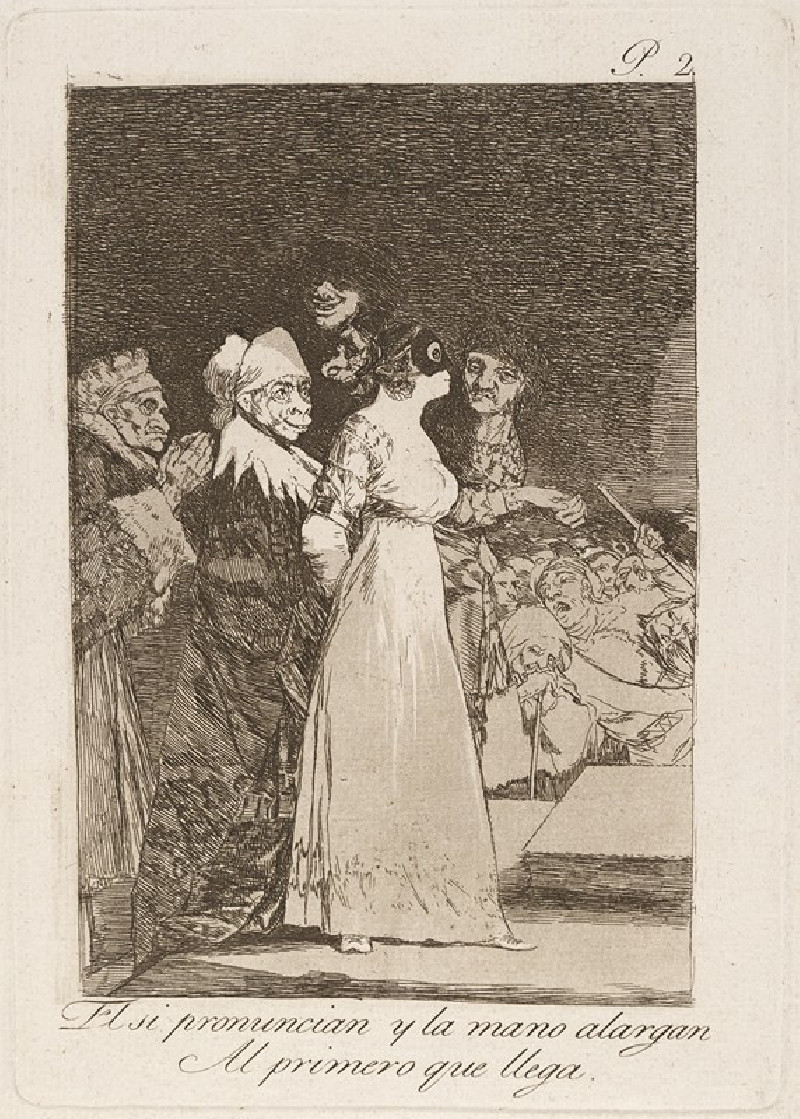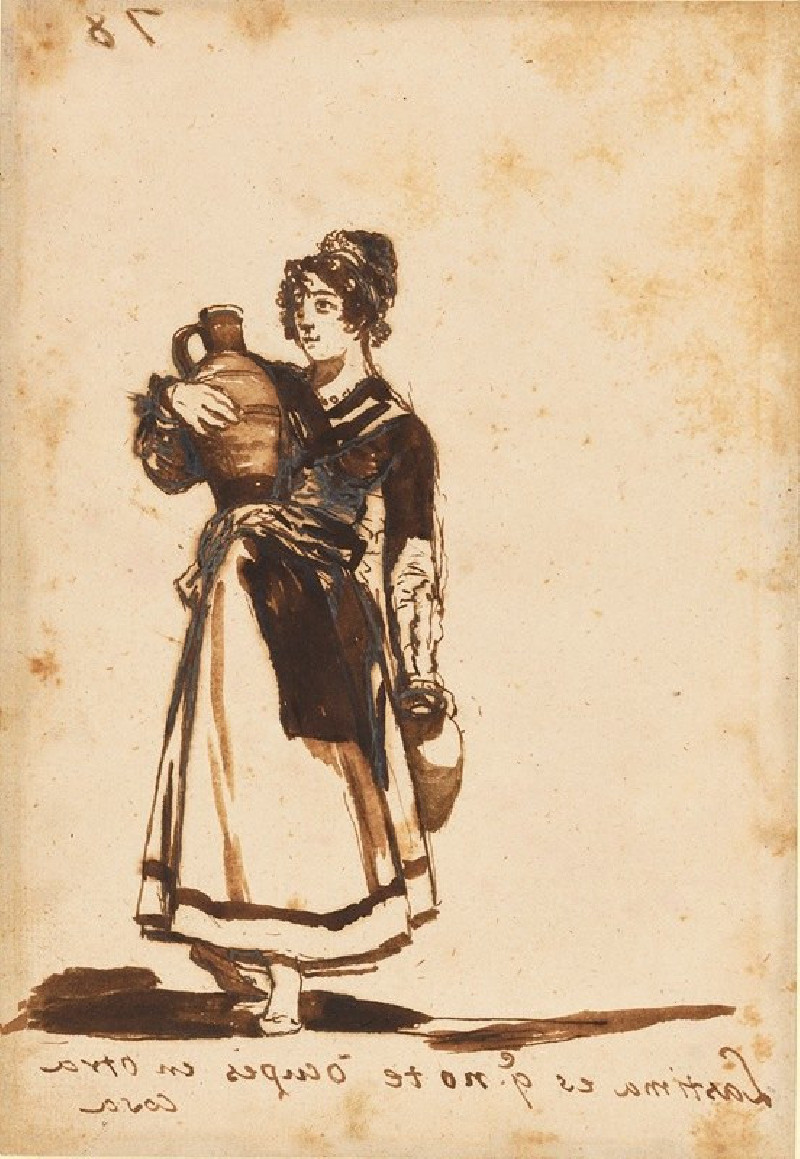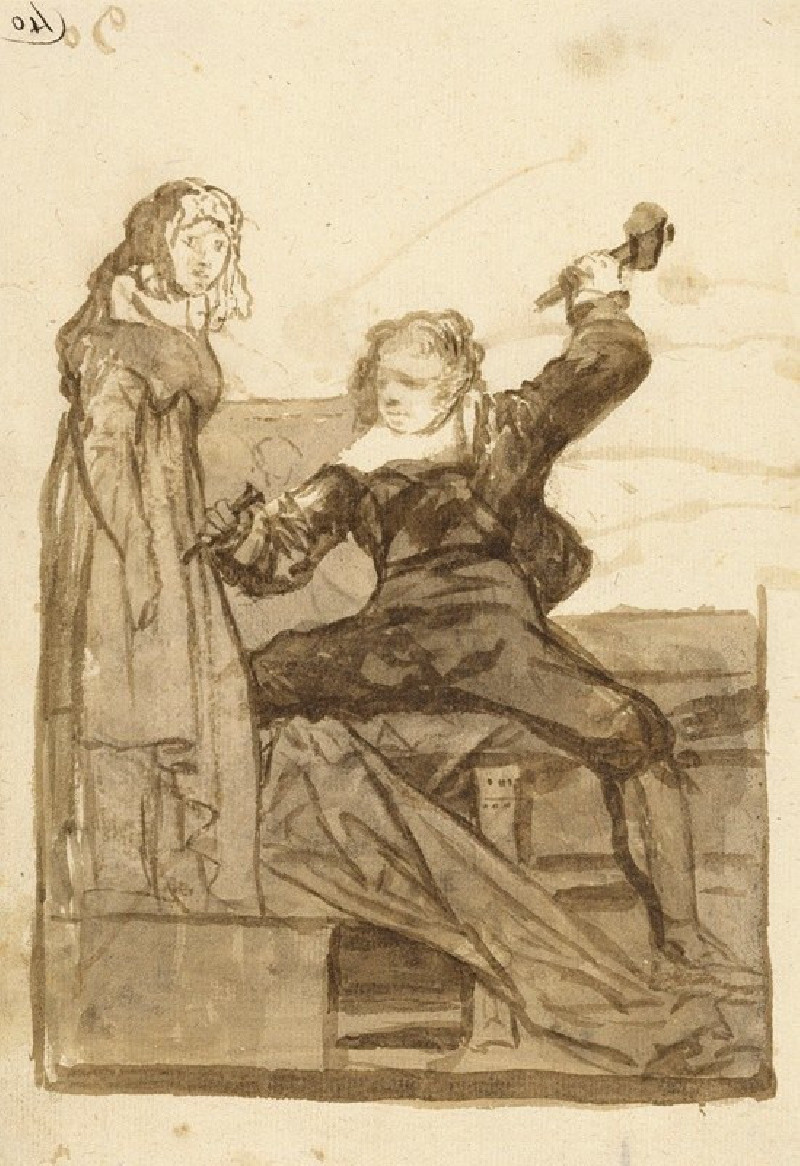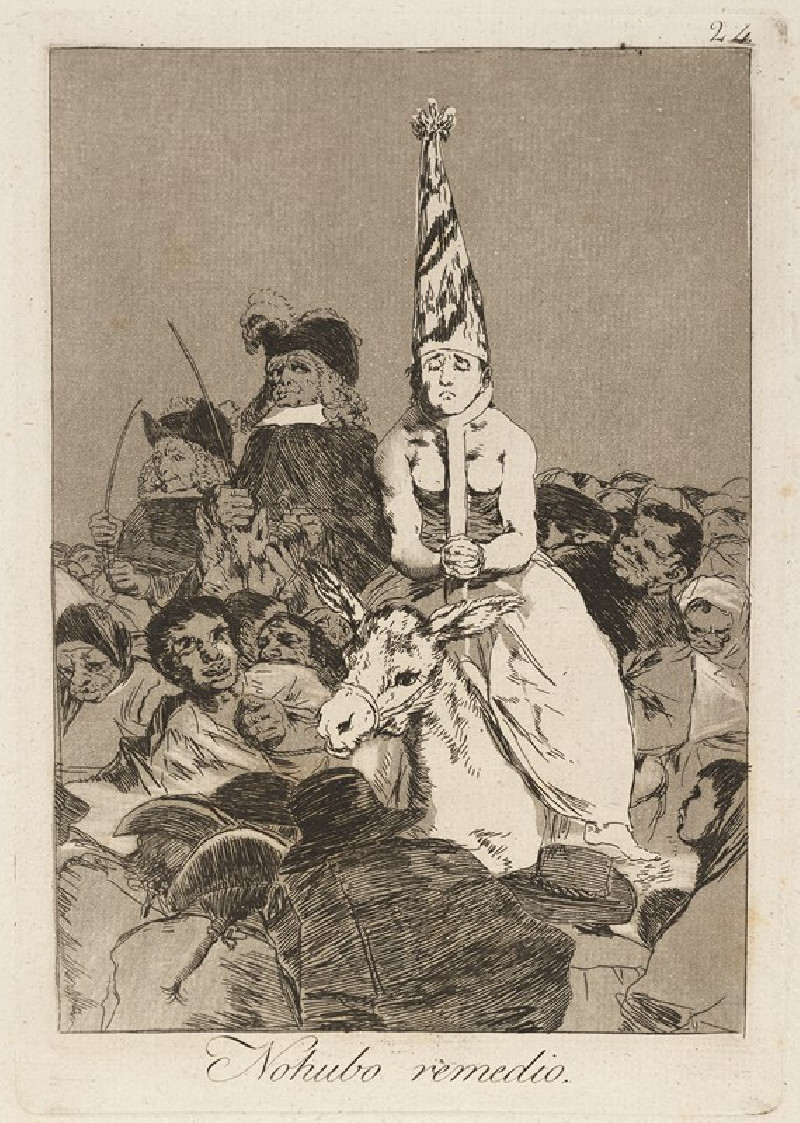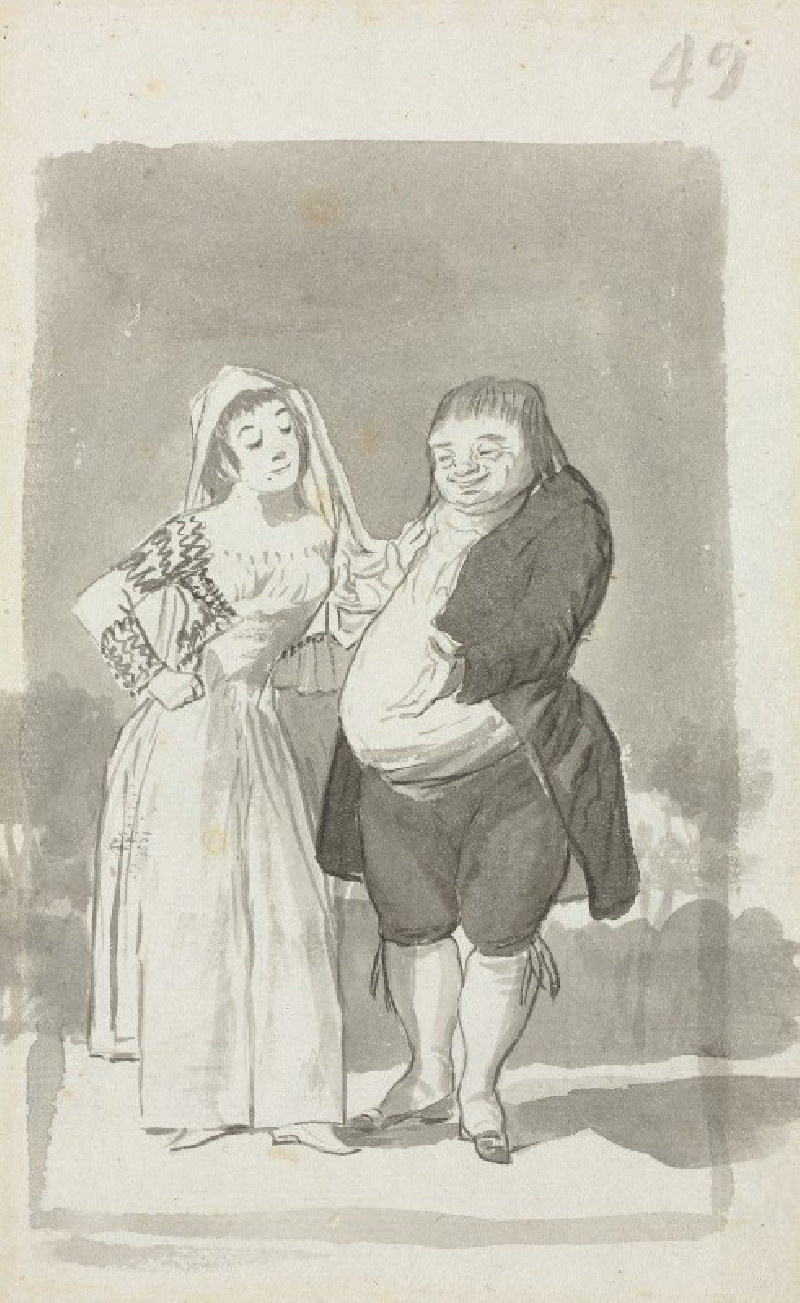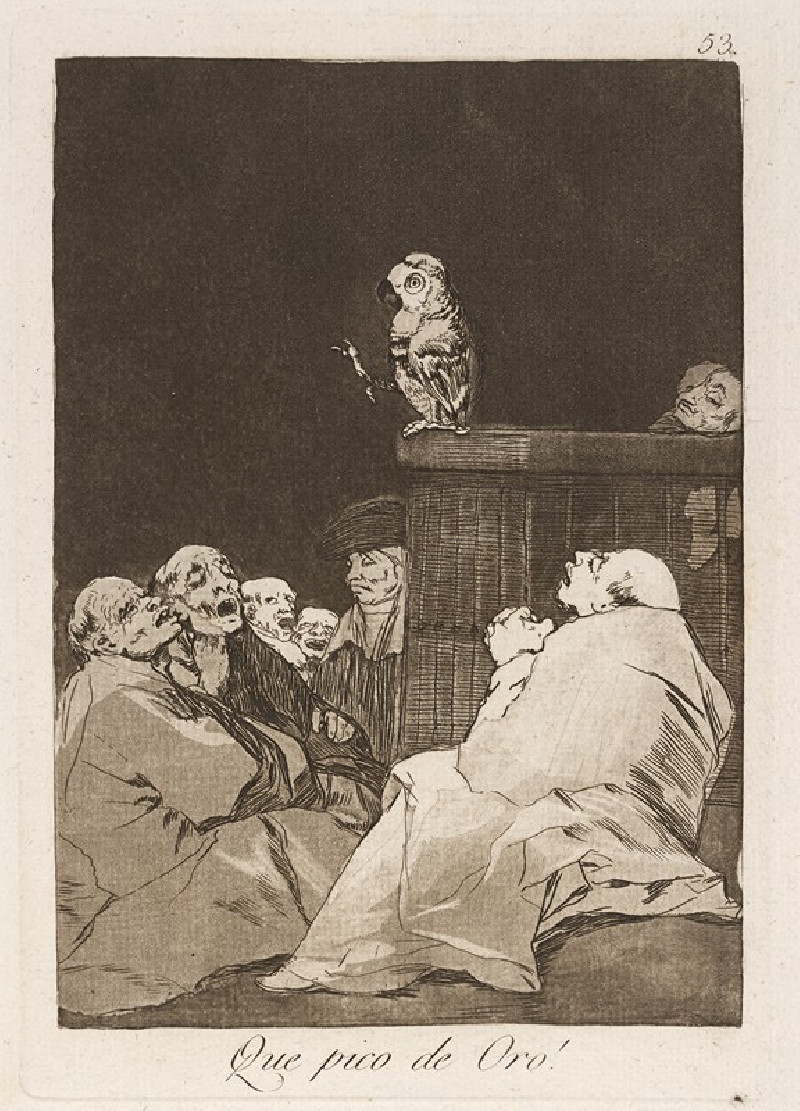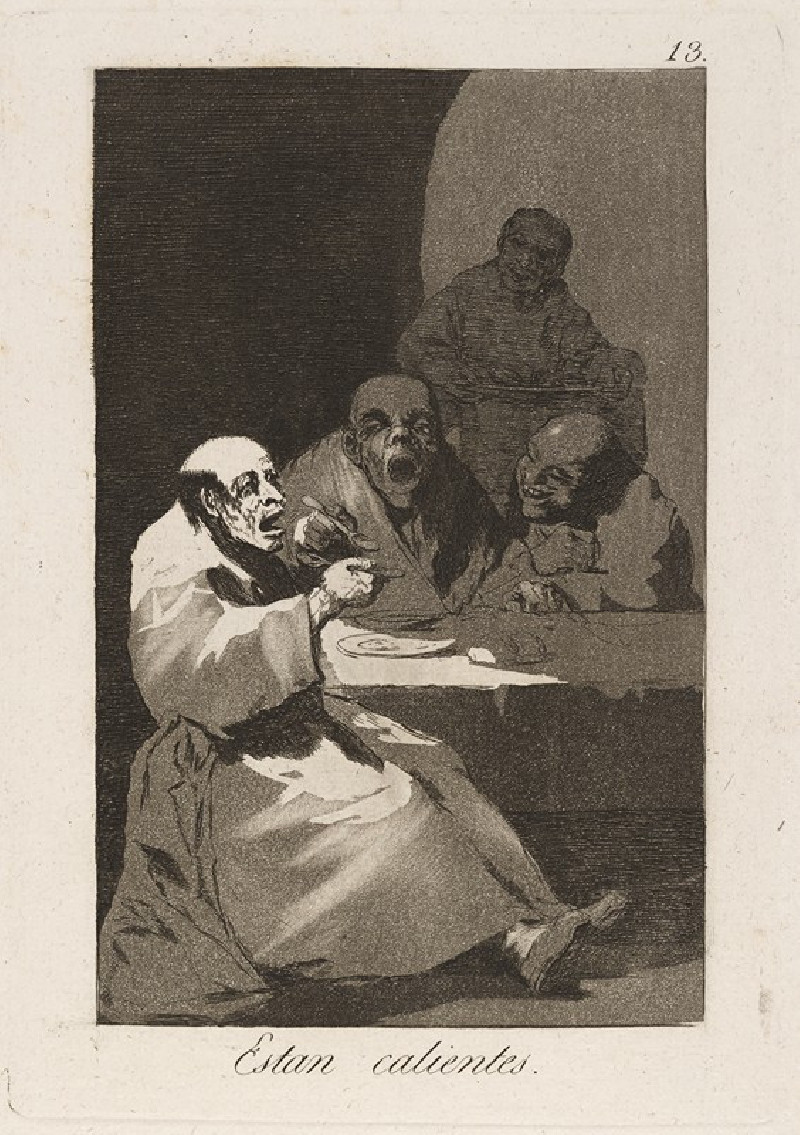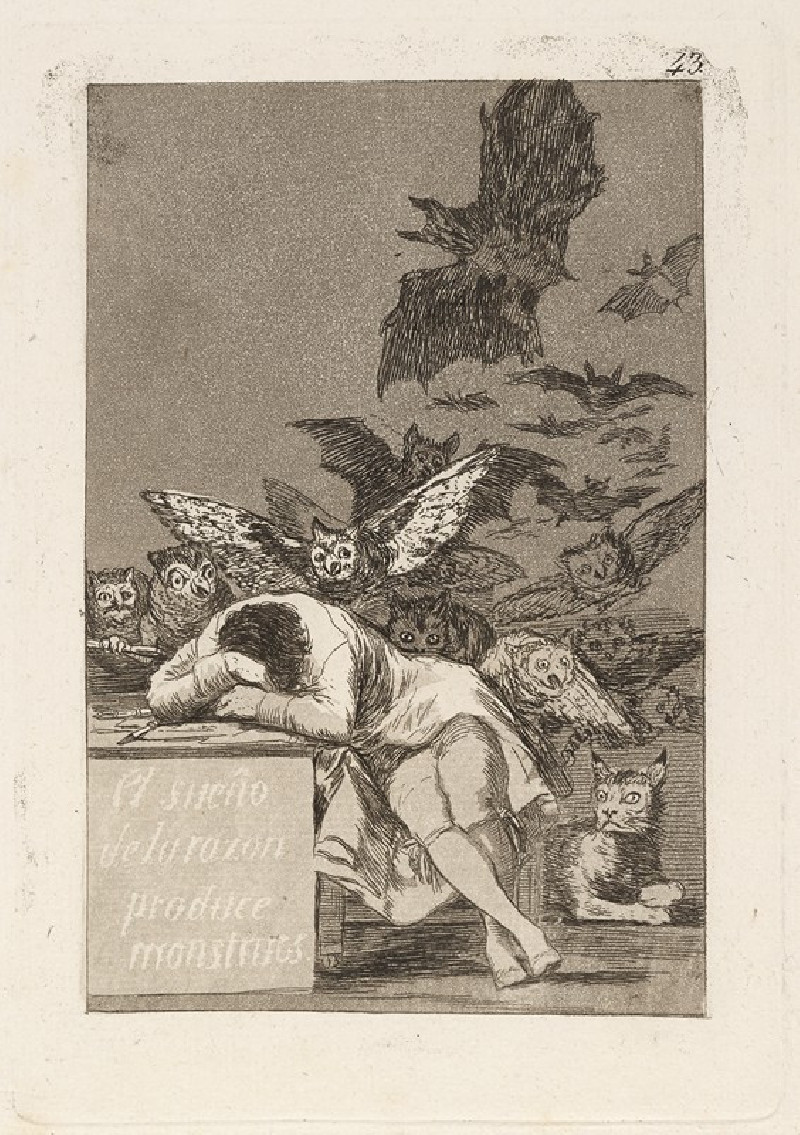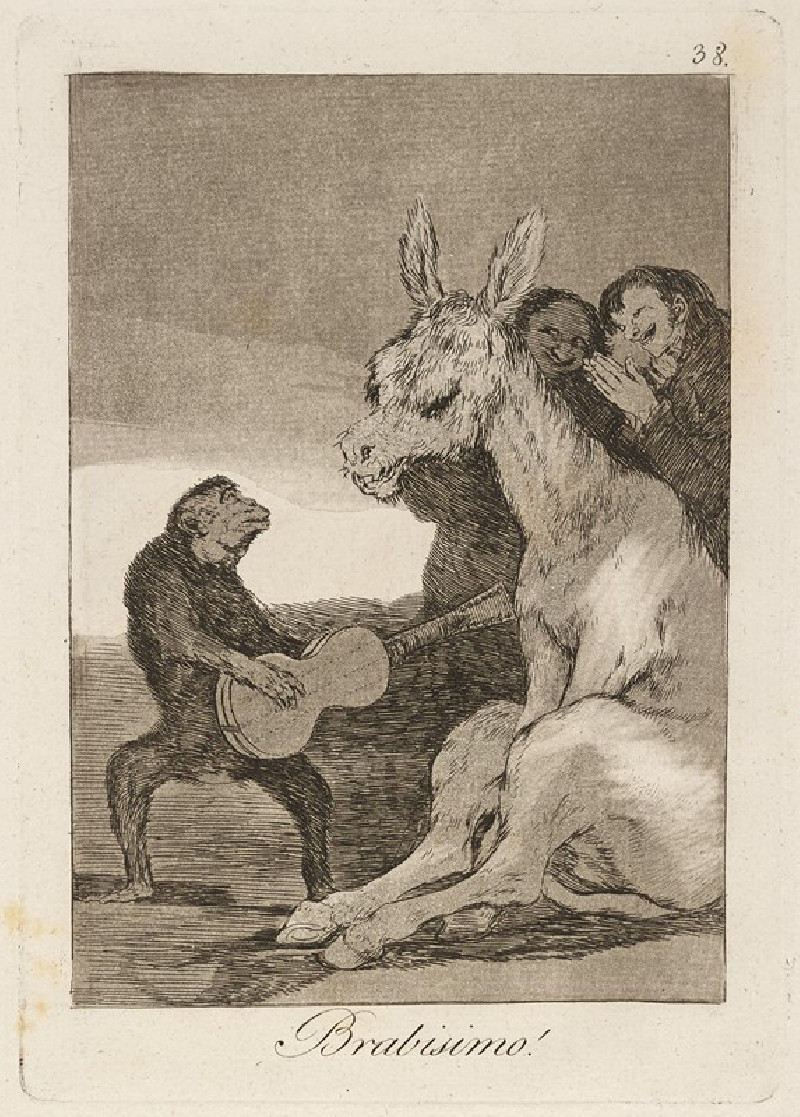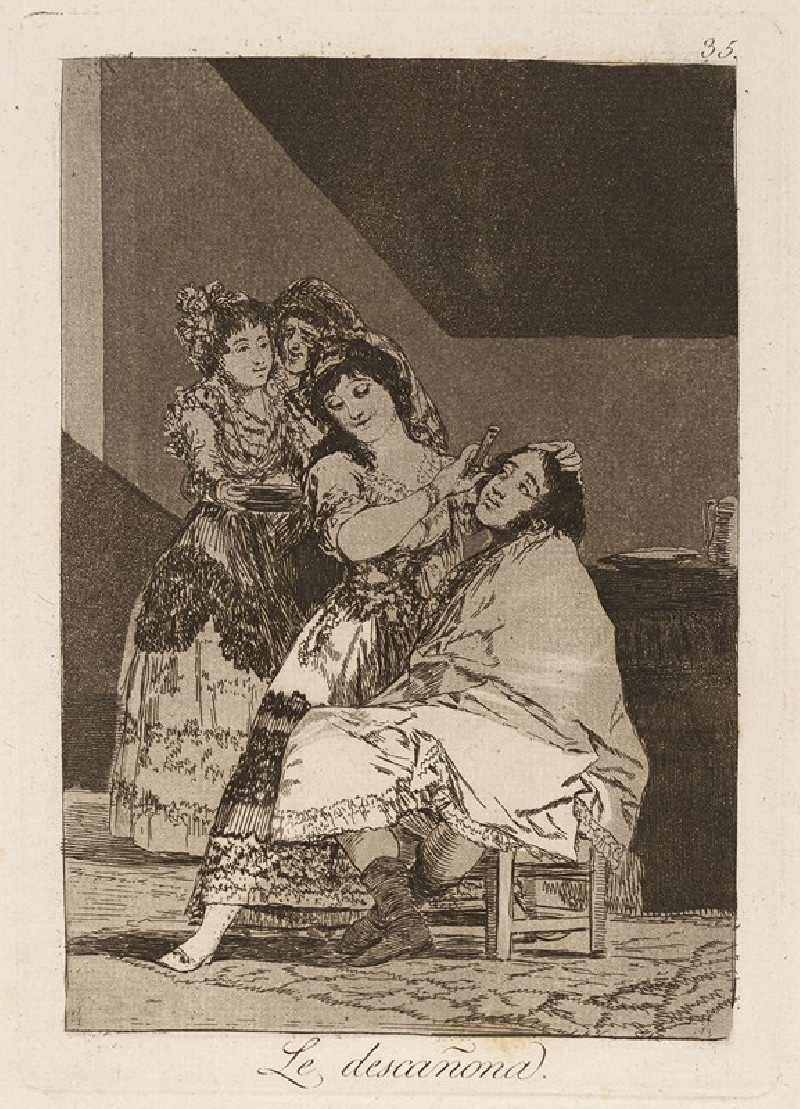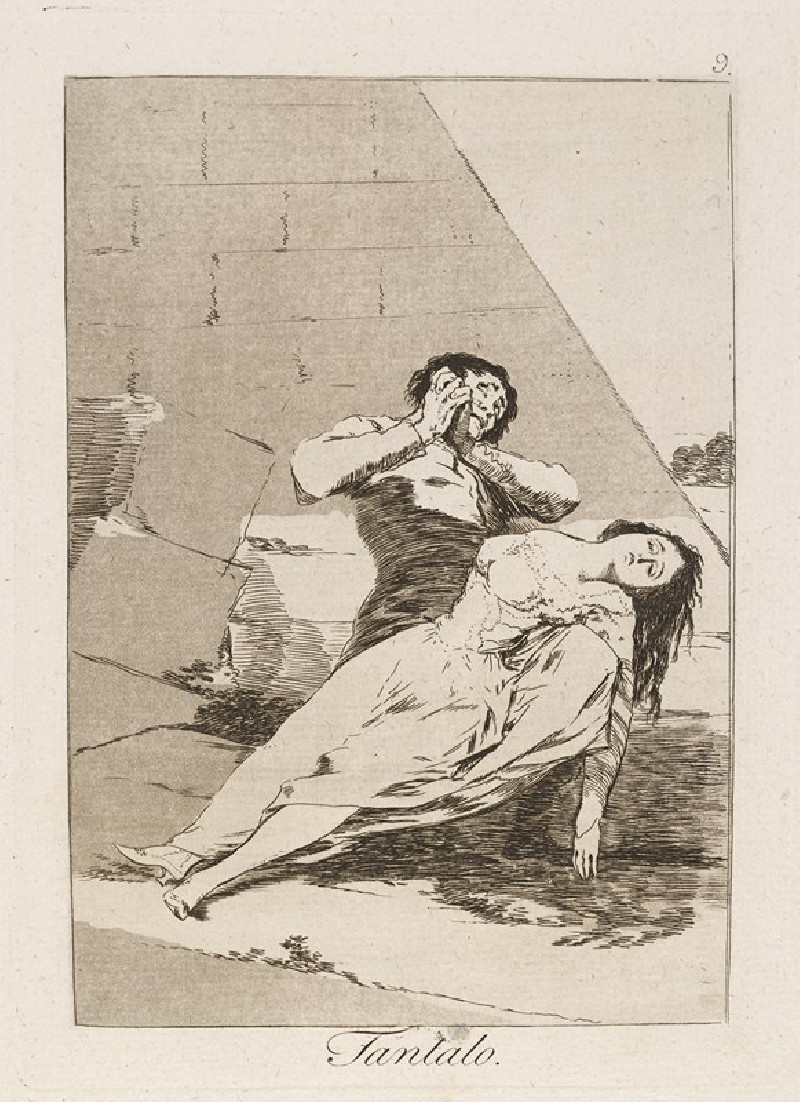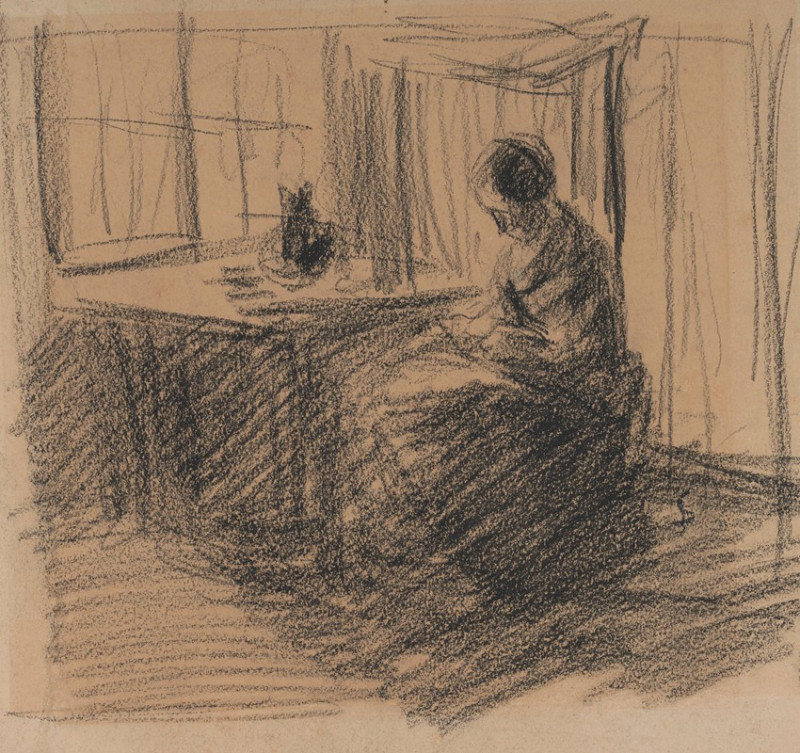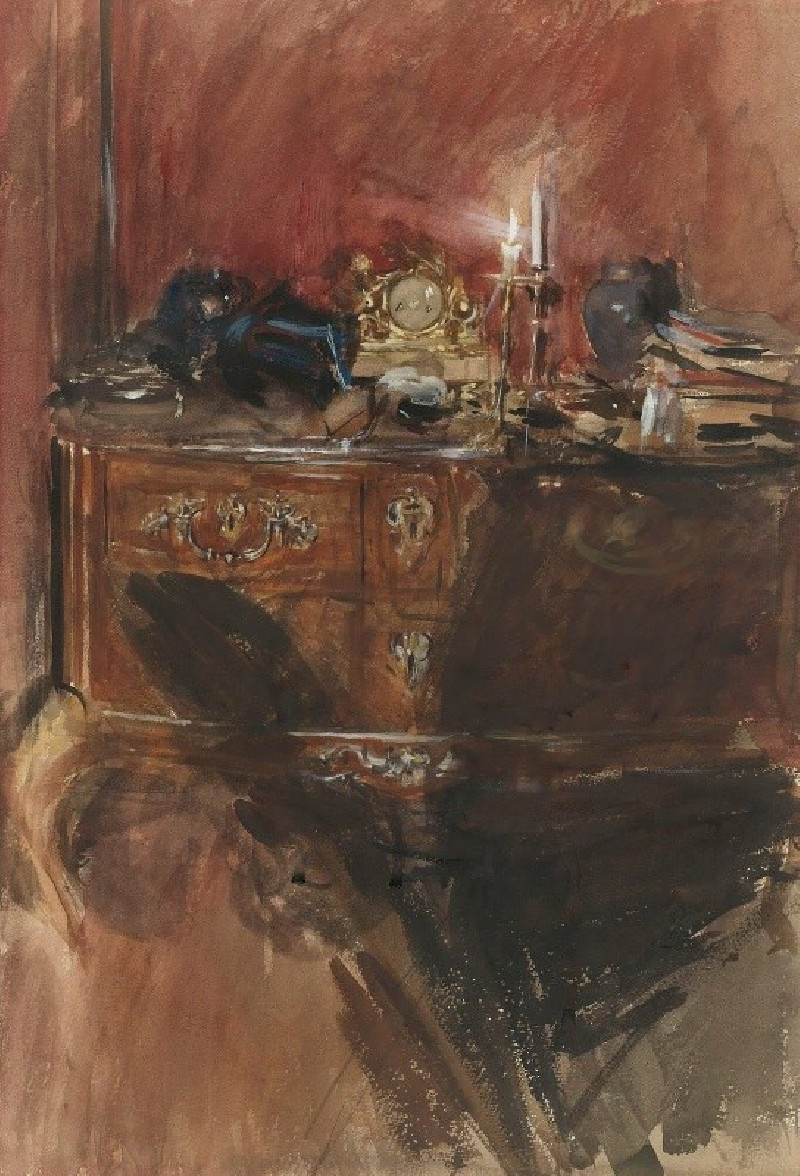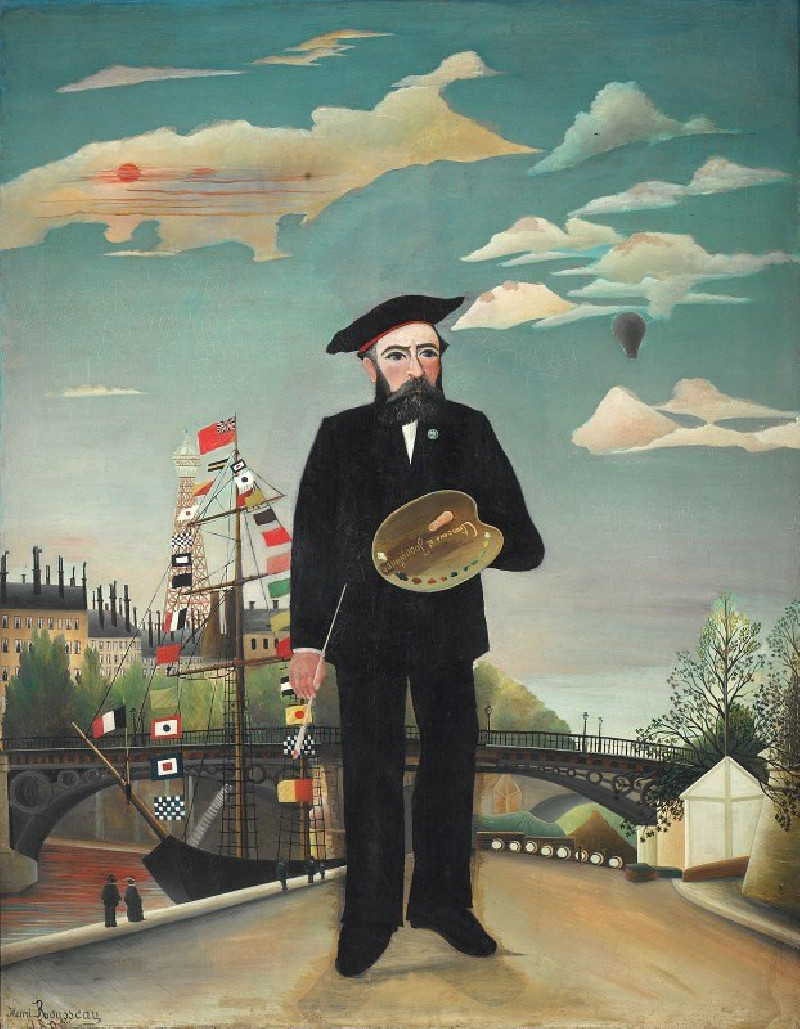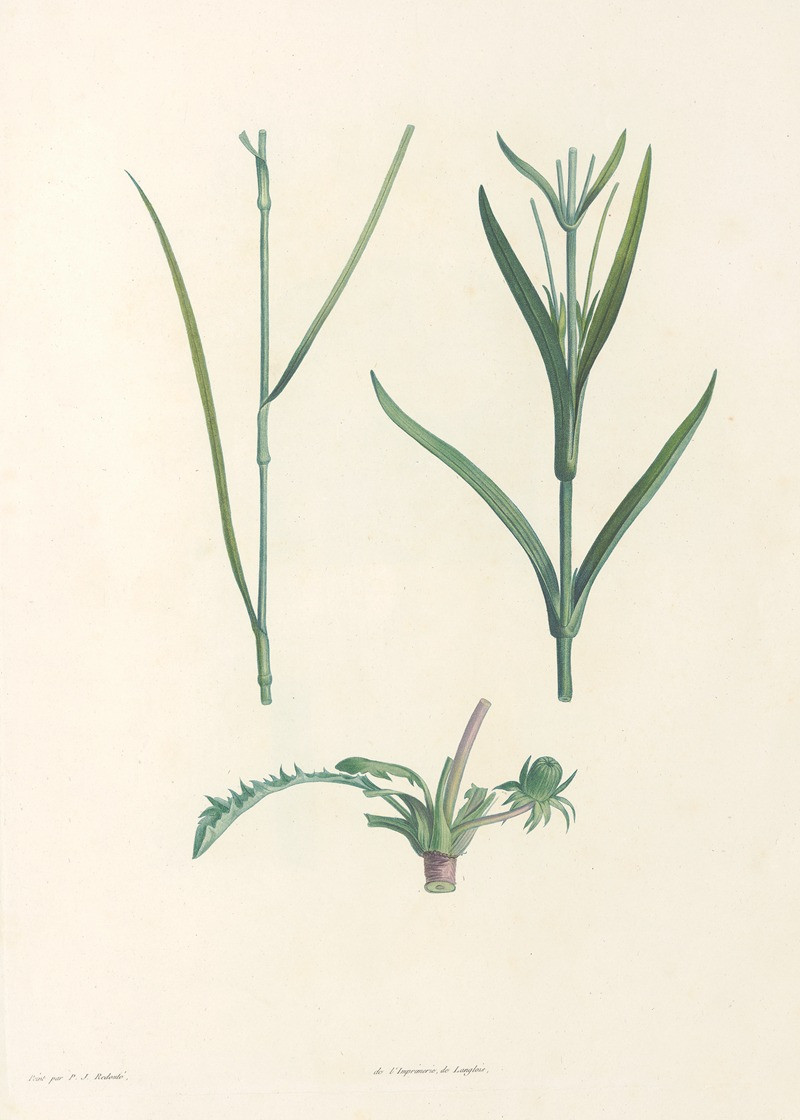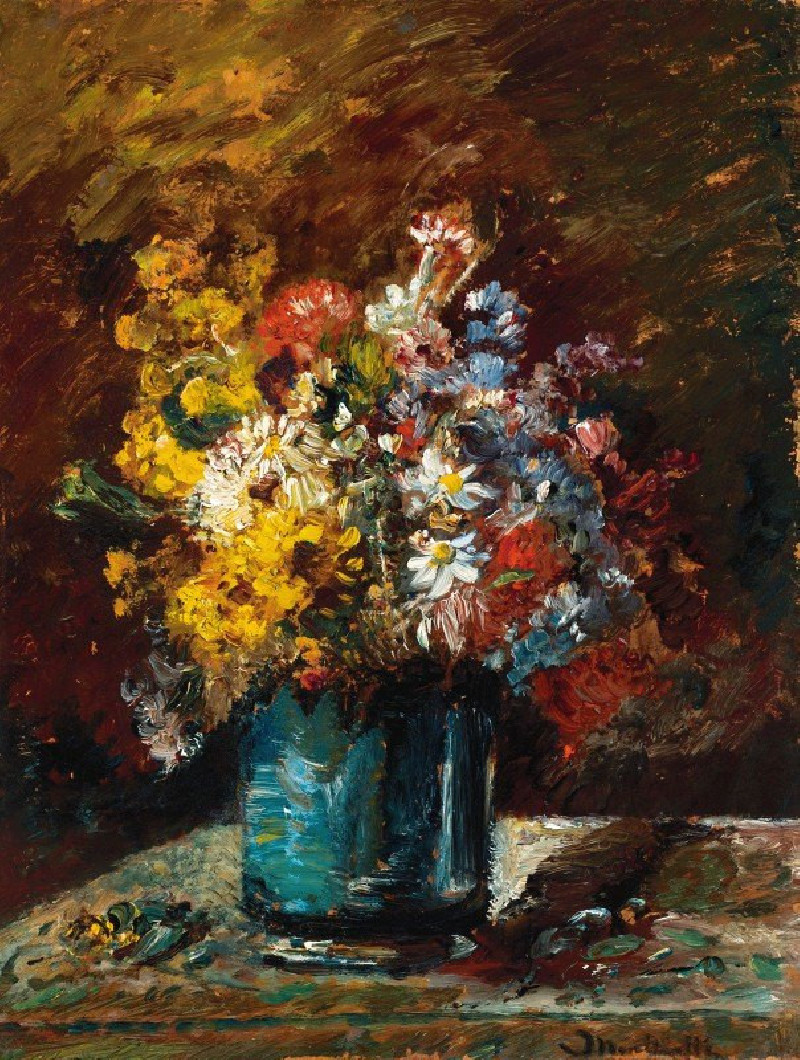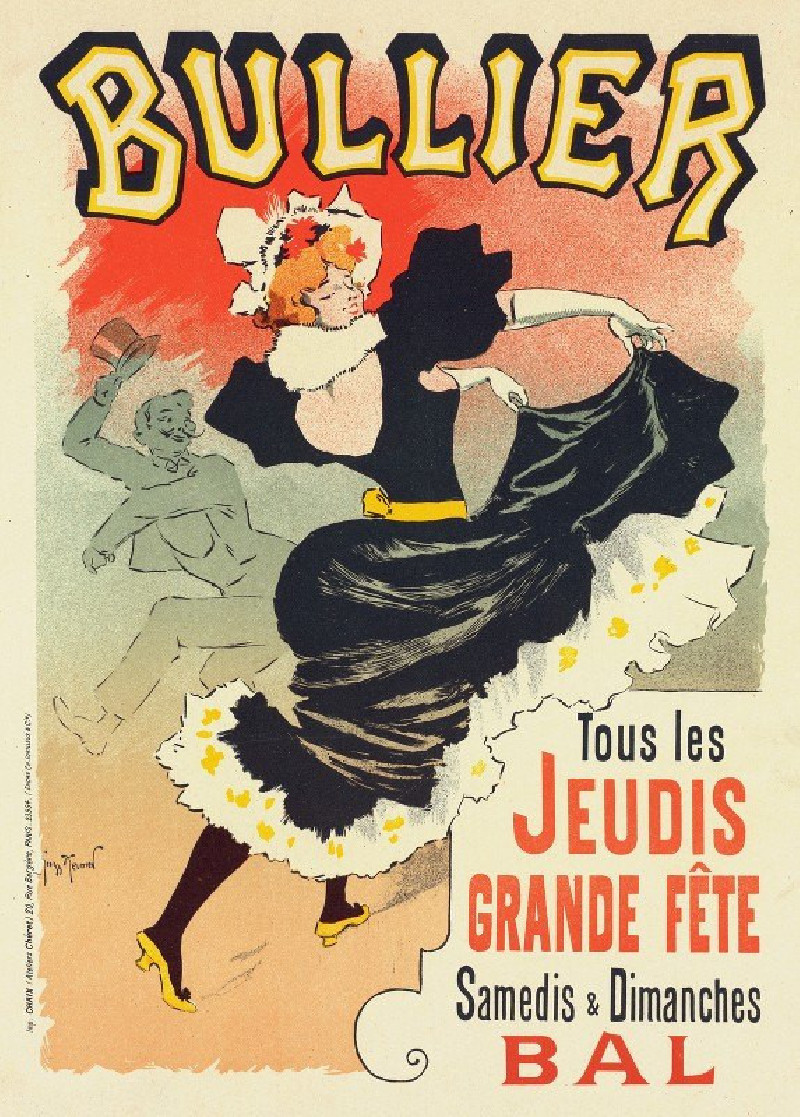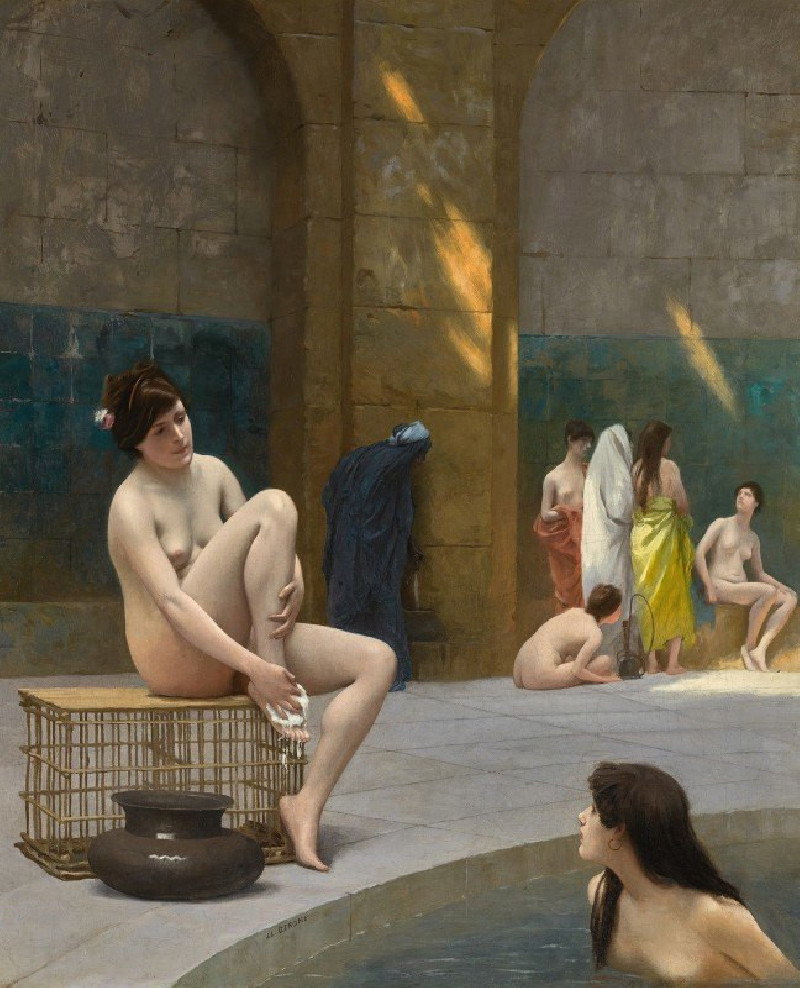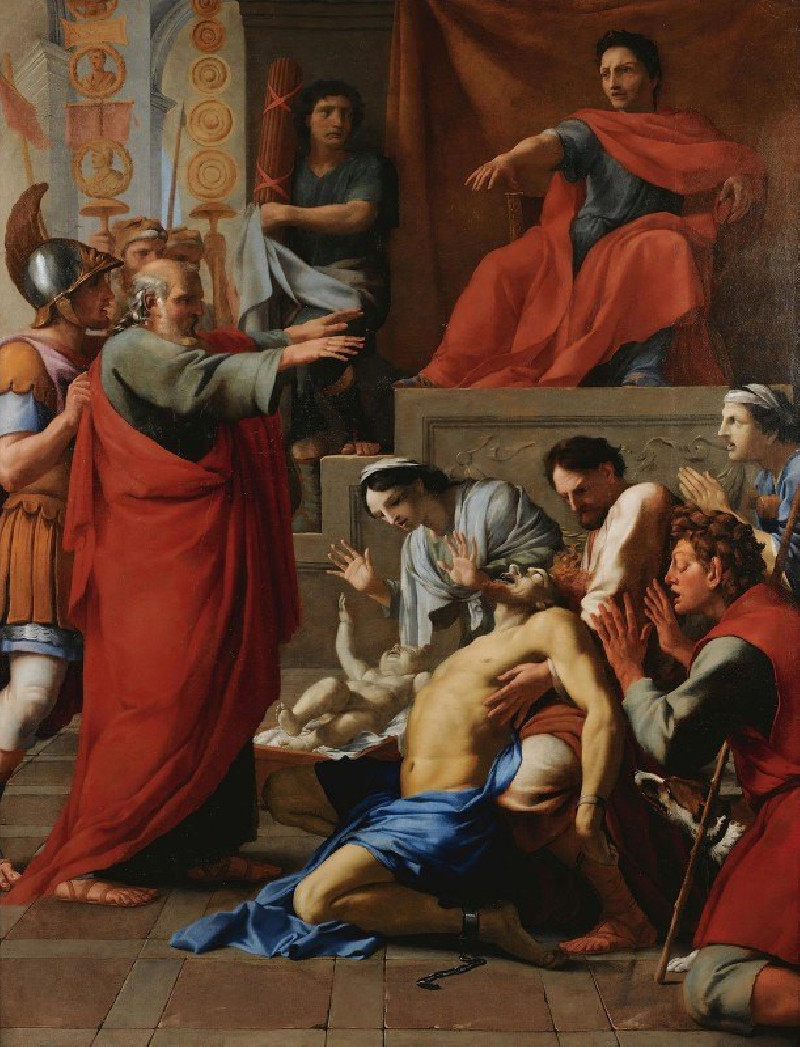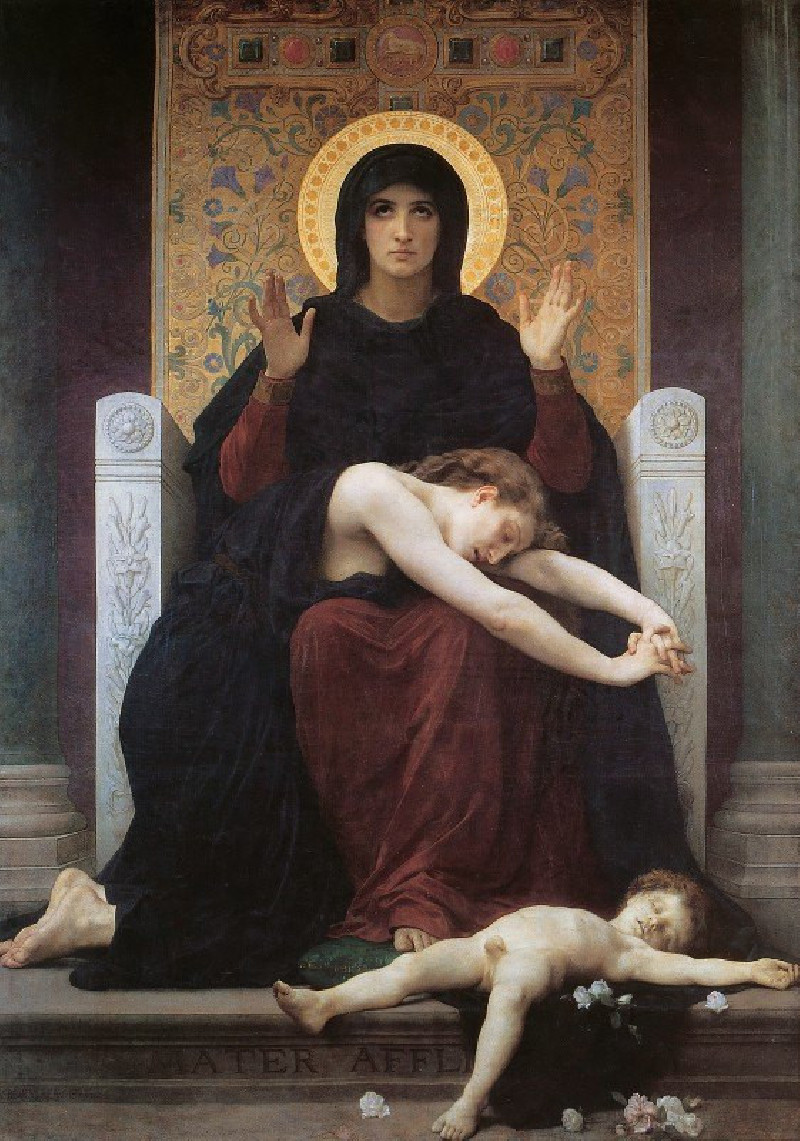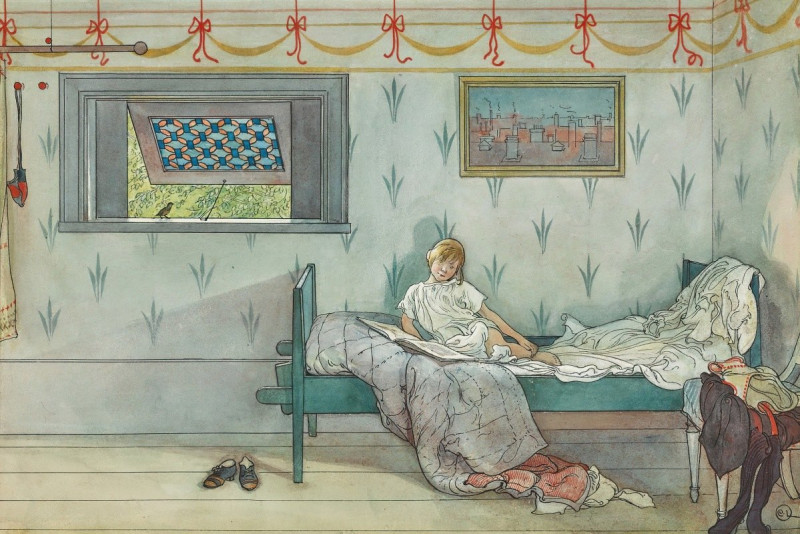Chiton. (Hush.) (1796-1797)
Technique: Giclée quality print
Recommended by our customers
More about this artwork
(Hush.)" (1796-1797) by Francisco de GoyaFrancisco de Goya's etching "Chiton. (Hush.)" from his series titled "Los Caprichos" exudes a palpable sense of mystery and human emotion. This remarkable artwork illustrates Goya's skill in capturing the layers of the human condition, entwined with social and political commentary.The scene depicted in this etching shows two figures, one appearing to whisper into the ear of the other. The figure on the right, cloaked in a dark shawl, leans towards an elderly person, who is bowed and leaning on a cane. The interaction seems secretive, almost cautionary, as suggested by the title "Chiton," which translates to "hush" in English. This could imply a discussion of sensitive, perhaps even subversive, topics—a common theme in Goya's work, which often critiqued the society and politics of his time.The use of contrast in this etching, with dark shadows against the lighter tones of the background and the subjects' clothing, emphasizes the intensity and gravity of the moment. The figures are rendered with detailed attention to the textures of their garments, and the expressions captured suggest an urgent, possibly foreboding conversation.This piece is exemplary of Goya's profound ability to weave visual depth with commentary on human nature and societal norms.
Delivery
Returns
Francisco José de Goya y Lucientes (30 March 1746 – 16 April 1828) was a Spanish romantic painter and printmaker. He is considered the most important Spanish artist of the late 18th and early 19th centuries. His paintings, drawings, and engravings reflected contemporary historical upheavals and influenced important 19th- and 20th-century painters. Goya is often referred to as the last of the Old Masters and the first of the moderns.

